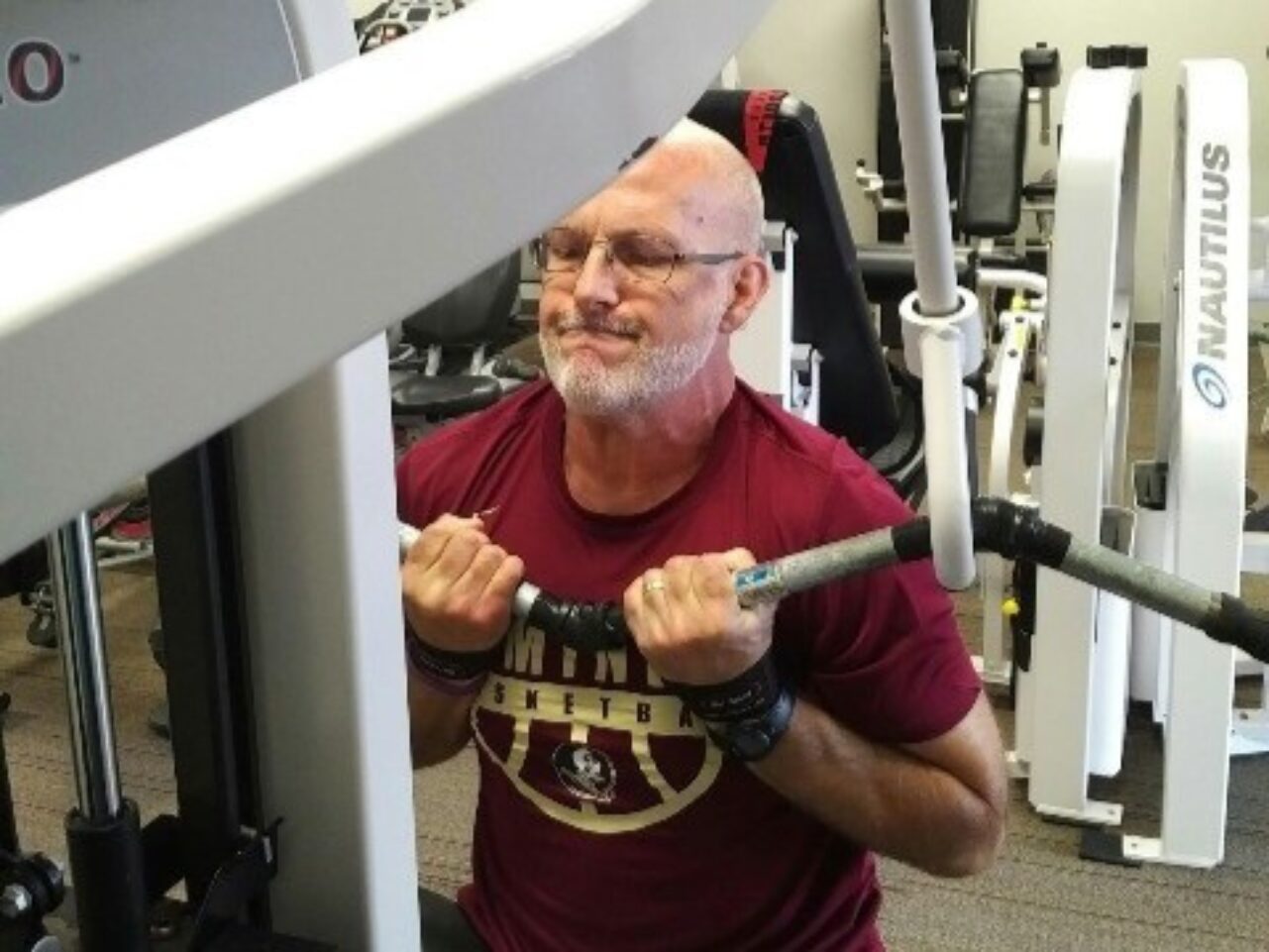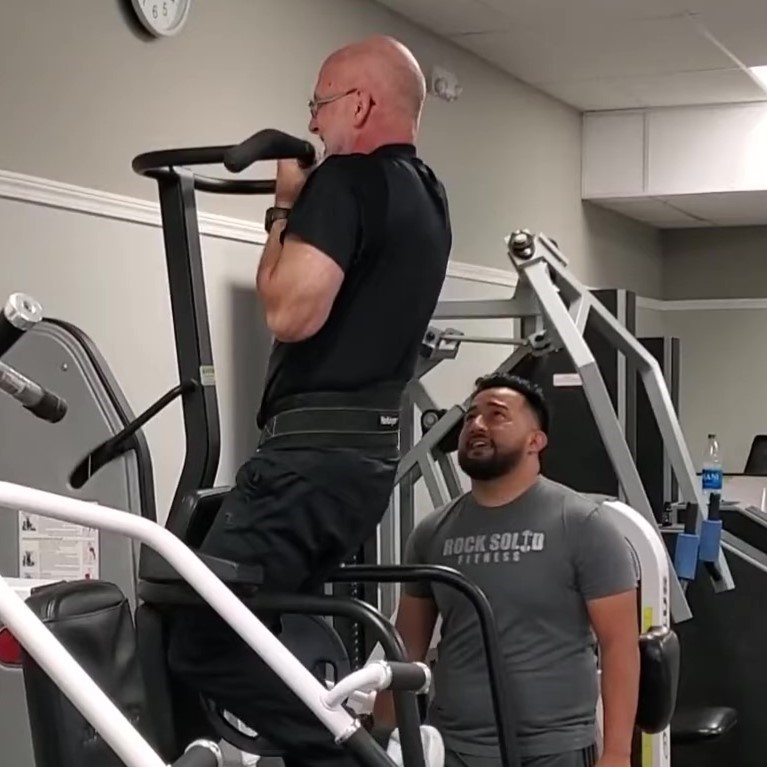How to Get The Most From Your Advanced Over-50 Workout Routine
While many fitness plans cater to beginners or focus solely on maintenance, an advanced workout routine designed specifically for individuals over 50 can help you build strength, maintain lean muscle mass, and feel more capable than ever.
As we age, our bodies undergo natural changes—reduced hormone levels, slower recovery, and a gradual decline in muscle mass (sarcopenia). But the good news? These shifts don’t mean you can’t train hard.
In fact, they make it even more important to follow a well-structured and intentional program. An advanced workout routine takes into account your experience level, current capabilities, and the need for joint-friendly, recovery-conscious training methods.
The one factor in your workout responsible for stimulating increased muscular size and strength is intensity. Intensity is defined as the percentage of possible momentary effort being exerted. The closer to 100% you get, the higher the intensity, and the greater the growth stimulation.
What we’re really talking about is a maximum effort. This is usually characterized by training to failure, until you can’t possibly lift the weight any more, no matter how hard you try. And once you hit that point, you don’t have to do it again.
If you are a beginner, training to positive failure is a whole new ball game for your muscles, and will provide all the muscle stimulation you need for a long time. When you’re first starting out with strength training, you should be able to increase the number of reps you do, the amount of weight you use, or both, on every exercise every workout for a long time.
But somewhere along the line, you reach a point where you can’t increase how much you can lift any more. Then what?
In this article, we’ll examine what the three levels of strength are, how they relate to each other, and a killer technique you can add to your advanced workout routine to exploit all 3 and stimulate some new muscle growth.
Your 3 strength levels
Your muscles possess 3 levels of strength. The first level is the positive, or concentric, level, which is used to lift or raise a weight as the muscle contracts and goes from an extended or stretch position toward the fully contracted position. This is the weakest of the 3 strength levels.
The second level of strength is the static level, which is used when you hold the weight at any given point in the range of motion, such as the fully contracted position. Your static strength level is greater than your positive strength; you can hold more weight at any point in the range of motion than you can lift from the start position to the finish position.
When you lower a weight slowly under full muscular control from the fully contracted position back to an extended position, you are using your negative, or eccentric, level of strength. Your negative strength is by far the strongest level.
Using the close grip pulldown exercise as an example, if you can pull 100 pounds from the start position to the finish position, in most cases you would be able to hold somewhere around 125 pounds at any point in the range of motion; and you can probably lower 140 to 150 pounds from the finish position back to the start position slowly, under full muscular control.
The differences in the 3 strength levels are easy to verify with a little experimentation in the gym. What we need to figure out now is – how do we utilize this information to our advantage?
How to exploit the 3 strength levels to skyrocket your strength
When you first start strength training, you can increase the number of reps you do, the amount of weight you use, or both, consistently for a long time. But somewhere along the line, you reach a point where you just can’t increase how much you can lift any more.
That’s where static holds come in.
A static hold is holding the weight in the fully contracted position of an exercise against full resistance for as long as you can, and when that is no longer possible, lowering the weight very slowly, inch by inch, fighting the resistance all the way back to the starting position of the exercise.
If you are stuck at a certain number of reps on an exercise, throwing in a static hold at the end of your set may be the new stimulus you need to get you over the hump and get your progress going again.
Static holds are a technique you can apply on certain exercises to tap into your static and negative strength levels, in a minimal amount of time, to increase the inroad into your existing strength levels, thereby increasing the effectiveness of those exercises.
What exercises can you use static holds with?
Static holds only work on exercises where there is full resistance against gravity in the fully contracted position. These include:
- Leg extensions
- Leg curls
- Pulldowns
- Chin ups
- Lateral raises
- Machine pec flys
- Calf raises
- Shrugs
- Rear deltoid raises
- Rows
- Tricep extensions (machine)
- Tricep kickbacks (dumbbell)
- Bicep curls (machine only)
- Back extension
- Abdominal crunch
Some exercises do not provide full resistance against gravity in the finish position, and are not good candidates for static holds.
Static holds are not effective on these exercises:
- Any pressing movement (leg press, bench press, shoulder press, etc.) ∙ Deadlifts
- Free weight curls
- Free weight tricep extensions (except dumbbell kickbacks) ∙ Dumbbell flys
How to perform static holds
Here is the best way I have found to use static holds:
Perform a set in normal fashion to positive failure, until you can’t lift the weight any more with good form. Re-rack the weight and rest for about 10 seconds; while you are resting, re-set yourself psychologically for another all-out effort.
Lift the weight to the finish (fully contracted) position, and hold it there for as long as you can. In my experience, this usually turns out to be about 10-15 seconds.

When you can no longer hold the weight in the fully contracted position, don’t just put it all the way down. Instead, as the weight moves an inch or two out of the fully contracted position, try to hold it in this new spot. When it moves again, keep trying to hold it; fight against the force of gravity every inch of the way through the whole range of motion.
When you get back to the start position of the exercise, there should be no doubt in your mind that you have fully stimulated that muscle.
Note: Whenever you perform a static hold at the end of a set, be sure to record it on your workout card. I usually record the number of regular reps I do, and then write the initials “SH” after it. You want to be able to recall when you used the technique so that when you look back over your training records you can determine what worked and what didn’t.
Static holds can be a great technique to help you break through a training plateau on the exercises where they can be utilized. They are also a great way to inject some variety into your workouts to keep your motivation high. Give them a try, and be prepared to watch your weights go up!
Ready to Take the Next Step?
If you’re serious about building muscle, boosting strength, and pushing past plateaus after 50, then the Ageless Strength Mastery Advanced Training Program is your next move. This comprehensive program is designed specifically for experienced lifters over 50 who want a proven, science-backed path to lasting results—without risking injury or burnout.
To get more information about how Ageless Strength Mastery can help you elevate your advanced workout routine, CLICK HERE and discover what’s possible when age meets intelligent training.


2 Comments. Leave new
Hey dibbs 💪
What’s up Pat! Hope you’re doing well! I hope you got your high intensity workout in today 😁